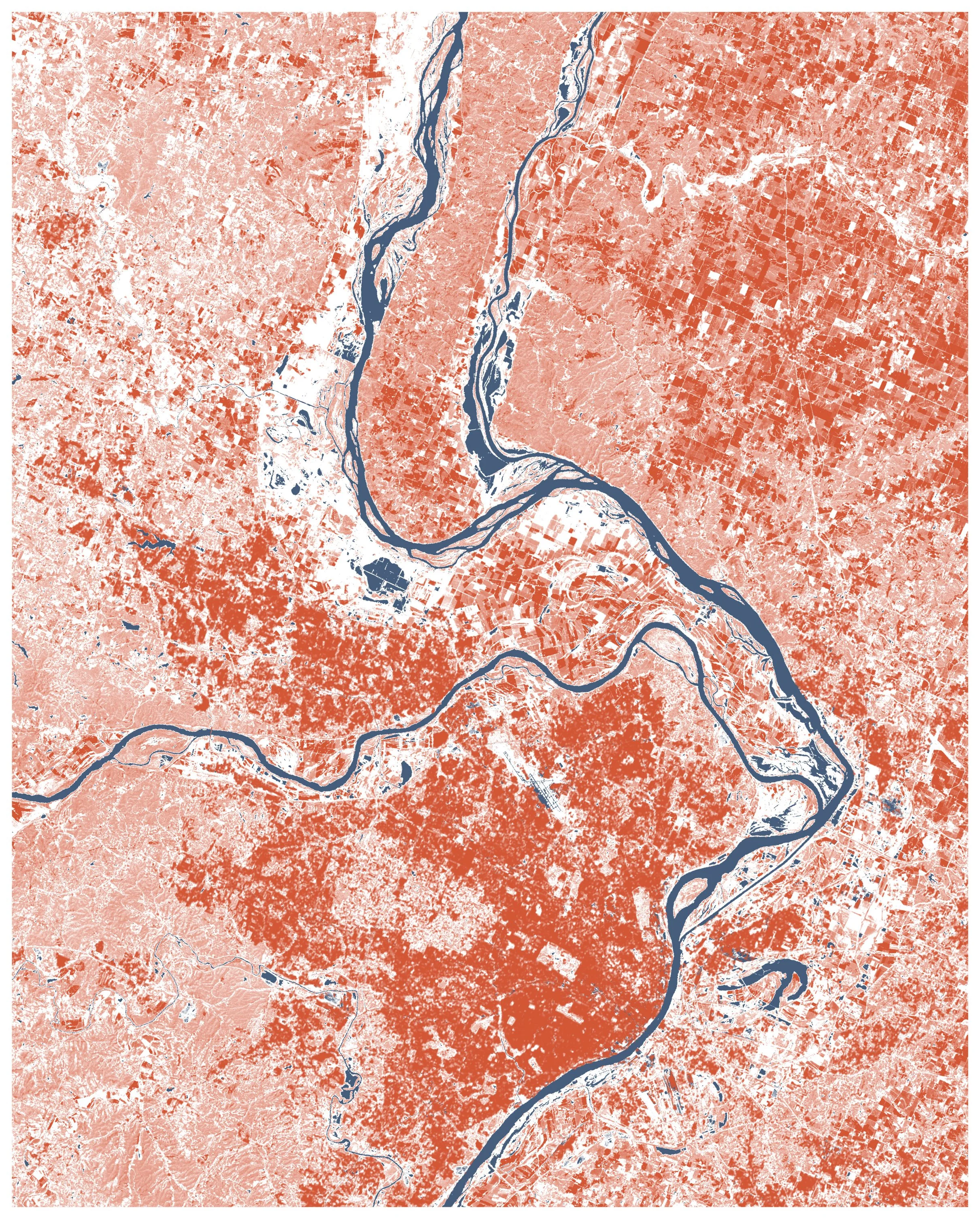THE MISSISSIPPI
Behind this uniquely charming name lurks an impersonator. For the Mississippi, seen as a river-tree, poorly conceals its crime: it should be called Missouri. This is obvious when observing its structure: it is indeed the Missouri that forms the main trunk. According to the rules of hydrology, it is the river with the greatest flow that gives its name when two rivers converge. And here, the Missouri, which is longer and more powerful, should give its name to the entire tree. Why this omission? Because the first Europeans explored the interior of the continent by travelling up the Mississippi, following this river closely, while the Missouri appeared to them to be only a tributary. The mighty Mississippi, immense and winding, thus imposed itself on the American imagination – and on the toponymy of the United States, the country it crosses and divides.
The town of Ste. Genevieve is referred to as ‘the oldest town west of the Mississippi,’ and the same phrase is used to refer to places located west of the river, in the drier, harsher, freer western half of the country, marked by the imagery of Westerns, the Silicon Valley and national parks. This city, Ste. Geneviève, was founded by French settlers along the river. In fact, the Mississippi basin largely corresponds to the former French Louisiana, sold by Napoleon, a vast inherited territory dotted with French place names and an impressive diversity of landscapes. The river originates in a landscape of coniferous forests and lakes in the north of the country, flows past the Great Lakes, and is fed by two major tributaries: the Ohio (flowing out of the rainy Appalachian Mountains) and the Missouri (coming from the snow-capped Rockies). Some of its tributaries also come from the Great Plains, while the river flows through the Midwest, the agricultural heart of the country, before ending its journey in the south, in a fabulous maze of vegetation: the bayous of Louisiana, flooded forests teeming with life.
This tree has seen entire civilisations rise and fall: the mound-building Mississippians, the Sioux, Cheyenne, Pawnee, peoples of the plains, the Cherokee, and the Ojibwe, living near the source of the river, at the top of the tree – which is not really the top – and to whom we owe its name: Misi-ziibi, meaning ‘Great River’ or ‘Father of Rivers’.
If the Mississippi were a tree, it would be a bald cypress for me, a Taxodium distichum. An iconic tree of the southern part of its basin, rooted in wetlands, it grows in water, with spectacular aerial roots – pneumatophores – that emerge in spikes to breathe. A tree of floods and waterlogged lands, it beautifully embodies the idea of the Tree-River, majestic, complex and intriguing.



